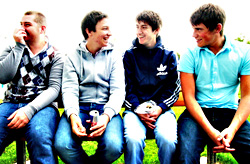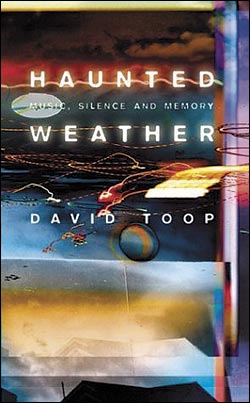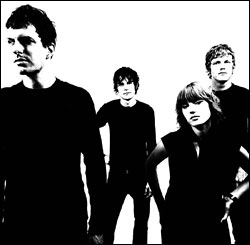A widely disseminated story by AP reporter Amy Teibel, dated Friday, June 10, revealed that Israeli soldiers tested a non-lethal acoustic weapon dubbed “the Scream” during a recent demonstration against the West Bank wall, after participants became increasingly violent. “Protesters covered their ears and grabbed their heads, overcome by dizziness and nausea, after the vehicle-mounted device began sending out bursts of audible, but not loud, sound at intervals of about 10 seconds,” Teibel wrote. “An Associated Press photographer at the scene said that even after he covered his ears, he continued to hear the sound ringing in his head.”
Online U.S. lefty conjecture suggests that Israel has latched onto American Technology Corporation’s Long Range Acoustic Device, or LRAD. Goodness knows, the U.S. has. According to the company’s brochure, “LRAD is known throughout the Department of Defense as ‘The Sound of Force Protection.'” With a strong presence in the Department of Defense, the Department of Homeland Security, and numerous other government and law-enforcement entities, the 45-pound, disc-shaped combination bullhorn, sonic disrupter, and kinky playback module (MP3, CD, laptop, voice, and video inputs; 500-yard-plus range at 120 decibels) is easily the most popular sonic apparatus with weapon capabilities ever.
It’s also the most thoroughly and reliably documented. Sure, digital folk histories of acoustic combat contraptions abound, and not all of what they offer is hooey. “Infrasound”—vibrations below the range of human hearing (between 20 hertz and 20,000 hertz)—has profound effects on living organism and inanimate object alike, potentially rattling the latter to flinders and generating the aforementioned symptoms, along with confusion, depression, and even death, for the former.
But apart from seemingly unanimous agreement that 7 hertz can potentially kill, the jury is out as to exactly what happens where in the spectrum. Certainly, no firsthand accounts support one site’s assertion that 12 hertz is the irresistibly bowel-loosening “poop frequency” long pursued by mean-spirited electronic musicians.
Likewise, while Nikola Tesla probably did experiment with low-level infrasound as a potential therapeutic tool, evidence backing another site’s contention that the dapper inventor and enduring fringe-science superstar “designed and tested infrasonic impulse weapons capable of wrecking buildings and whole cities on command” is nowhere to be found. Given the bigness of the silent bang’s alleged results, wouldn’t someone have noticed? Hard facts about rumored French and Nazi vibration-based war machine attempts remain equally G-string-scanty, although Jack Sergeant’s excellent but dated “Sonic Doom” (Fortean Times, December 2001) offers a few chewy tidbits regarding the latter.
What we do know about subsonic weapons is that, traditionally, they’ve been cumbersome and very hard to manage; weapons-grade bass requires a lot of energy and a huge delivery system. Plus, low frequencies are omnidirectional, making them all but impossible to focus—until recently. It turns out that the Israeli weapon and LRAD are two very different critters. While both fall under the “nonlethal weapons” rubric, a media advisory from American Technology Corporation makes their differences painfully clear.
“Extremely amplified very low frequency sounds,” the document states, “can set up a resonance within the inner ear and cause extreme discomfort for those subjected to these frequencies; very low frequencies (<20Hz) can cause internal organ damage. . . . LRAD does not produce harmful very low frequency (300–3000Hz) sounds. . . . Also, LRAD requires significantly less power to operate than is required by the SCREAM for the generation of its extremely amplified very low frequencies."
Even discounting the “Curdler,” an oscillator-driven demoralizer allegedly deployed by the CIA during the Vietnam War, LRAD hardly represents the government’s first foray into acoustic aggression. FBI agents blasted cult members with Tibetan Buddhist chants and rock and roll for days during the Branch Davidian siege of 1993, a slight programming departure from the military’s 10-day, pre-deposition party for Panamanian dictator Manuel Noriega in 1990, which included Martha and the Vandellas’ “Nowhere to Run” and Linda Rondstadt’s “You’re No Good.” Metallica—presumably, post–Black Album—reportedly serves similar duty in Afghanistan and Iraq.
The great advantage of the LRAD, one of ATC founder Elwood “Woody” Norris’ many brainchildren, is that it can play your favorite psy-ops selections and simultaneously project verbal messages that remain impeccably intelligible for the entirety of its range. Plus, while the device’s “warning tone” is no picnic for the ears, the sound is less likely to cause permanent hearing damage than Israel’s gizmos. Granted, the reduced likelihood of tissue damage could make the device an extremely attractive implement of torture in the wrong hands—or an equally alluring engine of light terrorism in others. Imagine how easily a miscreant could trash any sort of outdoor gathering.
Still, for all their shortcomings, contemporary acoustic crowd-control units are a lot more humane than most ostensibly nonlethal weapons—particularly the rubber-coated steel bullets used by Israeli soldiers in past situations. The sole extant photo from the Scream’s maiden voyage shows a young Palestinian boy making a “yucko” face, an index finger planted resolutely in each ear. While he’s clearly not enjoying himself, the image is far more benign than those yielded by past confrontations, to the extent that Norman Rockwell could have painted it.







